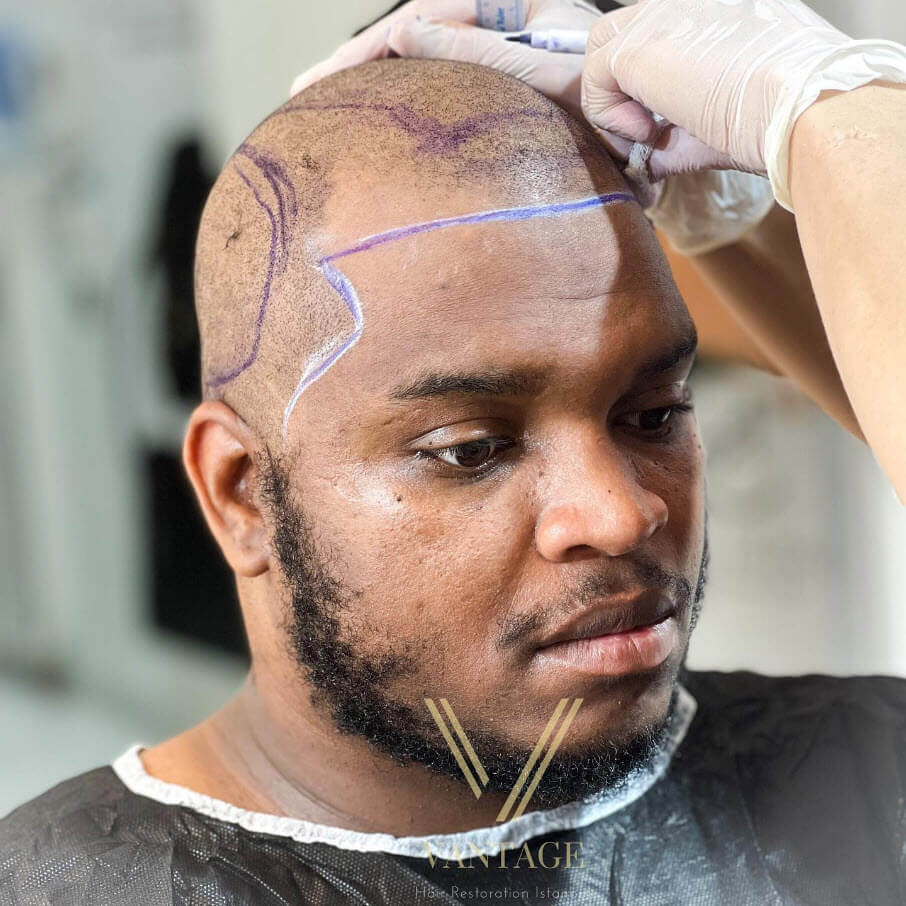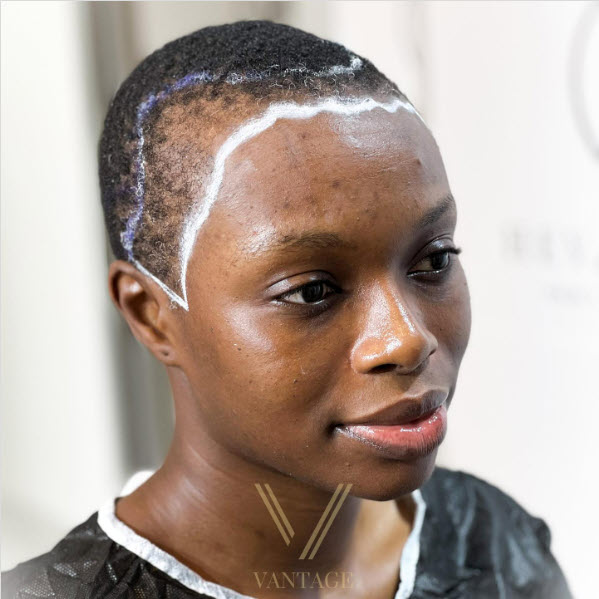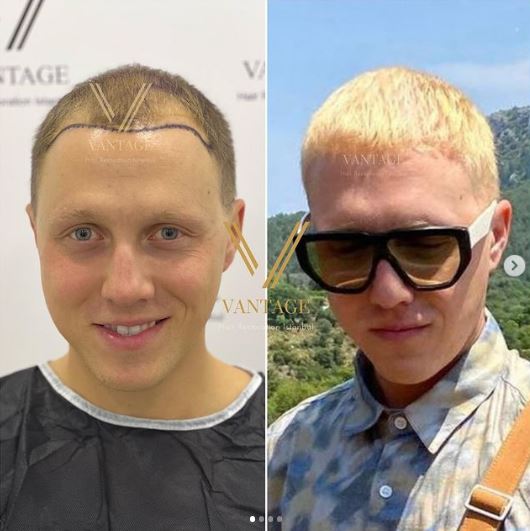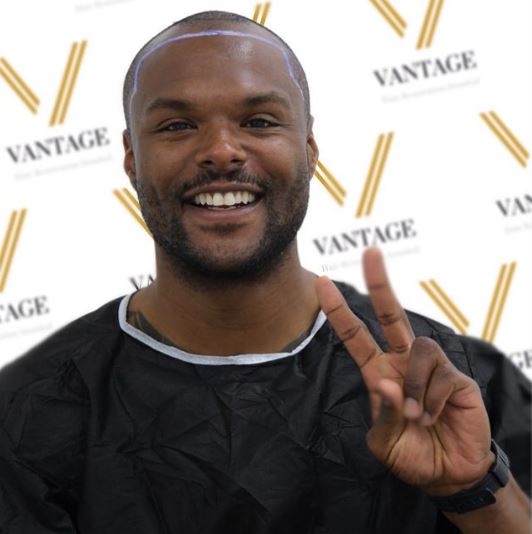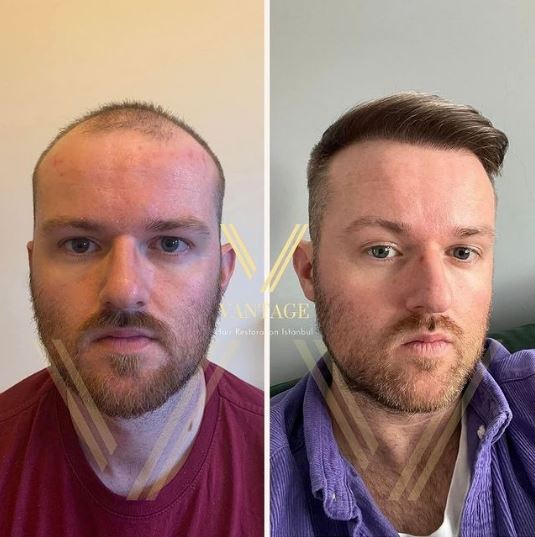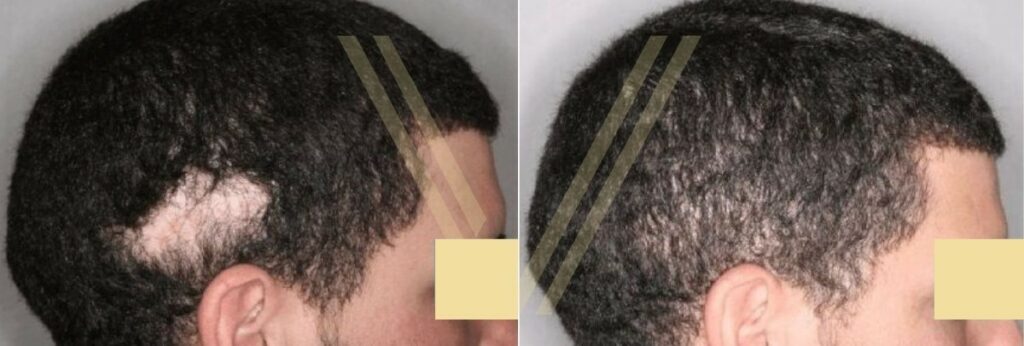
Hair transplant is a highly effective and permanent solution for hair loss. The procedure employs modern equipment and various techniques to achieve seamless results. However, in some cases, it may result in scarring. Due to the procedure’s popularity worldwide, inexperienced surgeons or clinics with poor hygiene may offer it. Fortunately, there are different treatments available for managing hair transplant scars. Keep reading to learn about the options for hair transplant scar revision.

One Patient at a Time

No Shave Option

No Hidden Fees
What causes hair scarring?
The hair transplant process involves removing hair follicles from a donor area, the only part of the procedure that can cause scarring. Several factors can cause scarring during a hair transplant. These include low-quality medical procedures, unrealistic expectations, and the involvement of unqualified surgeons who use incorrect methods. In such cases, both the donor and transplant areas can be damaged, leading to scarring. Therefore, you must be extremely careful when choosing a clinic and surgeon for your hair transplant.
Does a hair transplant leave scars?

A hair transplant procedure may result in scarring depending on the method used. Each technique has varying rates of scarring depending on how hair follicles are extracted. To avoid any scarring, it’s essential to choose a qualified and experienced surgeon who will carefully assess your hair loss and recommend the best approach for your individual needs.
Why do hair transplants leave scars?
Hair transplant is a minimally invasive procedure that involves creating microchannels and extracting hair follicles from the donor area. As with any procedure, there is a risk of scarring. However, many hair transplant options leave barely visible scars that typically fade away in less than two weeks. It is important to note that choosing an inexperienced surgeon or failing to provide proper care after the procedure may result in permanent scars.
Are hair transplant scars permanent?
Many sophisticated hair transplant methods offer temporary scars that may fade away shortly after the procedure. However, applying outdated methods such as FUT is more likely to leave permanent scars. Moreover, it may be visible if you like to keep your hair short. To avoid getting permanent scars after the procedure, you should do your research comprehensively before the procedure to choose a qualified surgeon.
What types of scars are commonly seen after hair transplantation?
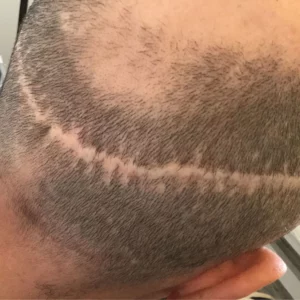
There are different types of scars that can occur after a hair transplant, depending on the specific methods used during the transplant. The type of scarring that occurs is primarily influenced by how hair follicles are extracted from the donor area and the creation of channels for implanting hair follicles. For example, the FUT method can result in linear scars, while the FUE method leaves behind tiny, round scars. Additionally, keloid scars are a rare side effect for afro hair transplant if the procedure is performed in an unclean environment.
What causes the linear FUT hair transplant scar?
Linear scars that appear after a hair transplant may be caused by the extraction method used during the procedure. Specifically, the FUT method involves removing hair follicles as strips, which can result in the removal of hair follicles and a noticeable amount of tissue, leading to a long visible scar. Although hair transplant procedures are usually minimally invasive, the FUT method is considered the most invasive due to this characteristic.
How to fix linear scarring from FUT procedures?
Hair transplant scarring can be corrected through scar revision, specifically in broad scarring resulting from FUT. The scar revision hair transplant involves the removal of scars, followed by re-suturing with trichophytic closure. In specific scenarios, micro-pigmentation may be employed to conceal areas of hair loss, utilizing pigments to cover exposed regions.
Moreover, grafting is another practical approach for hair transplant repair. In this method, a few grafts are strategically implanted into scars to reduce their visibility, resulting in a more seamless and natural appearance. It is always recommended to consult with a qualified and experienced hair transplant surgeon to determine the best approach for your specific situation.
Which hair transplant does not leave scars?

FUE and DHI are two minimally invasive hair transplant methods that extract hair follicles from the back of the head. These procedures may result in small scars, but the degree of visibility of these scars varies individually. The visibility of scars depends on several factors, including the individual’s healing ability, the surgeon’s expertise, and the specific techniques used. It’s worth mentioning that some individuals may develop more noticeable scars than others due to their skin type, the size of the punch tool used, and the number of grafts extracted.
How long are hair transplant scars visible?
Depending on your hair care routine after the procedure, hair transplant scars may disappear in 10-14 days. Each person has their own recovery pace depending on their metabolic rate, so to get rid of visible scars, drink plenty of water, obtain a nutritious diet, and avoid bad habits such as smoking.
How can I hide my hair transplant scars?
Several methods are available to cover or conceal scars caused by hair transplant procedures. One option is to use wigs or hairpieces to enhance hair growth after hair transplant. Another viable option is to opt for a scar revision hair transplant. During this process, the scars are removed and re-sutured using trichophytic closure. Additionally, micro-pigmentation can be used to camouflage areas of hair loss by applying pigments to cover the exposed regions.
How to cover donor scar hair transplant?
Depending on the type of scar, you may opt for different approaches to cover hair transplant scars. All of these methods fall under the umbrella of scar repair. There are several options available, ranging from scalp micropigmentation to hair transplant. Let’s delve into the details of the different methods used for scar repair.
What is hair scar repair?
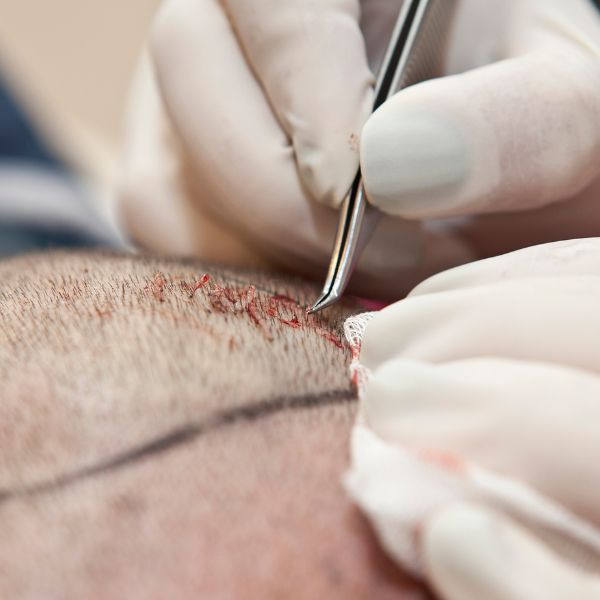
Scar repair is a renewing method if you have undergone a hair transplant and are unhappy with the resulting scar. However, it is crucial to seek the advice of a specialist to determine the best course of action for your particular condition. Furthermore, hair transplant scar treatments should be planned with the same care as the transplant procedure. Whatever option is chosen, it is imperative to ensure that all necessary tests and examinations are carried out carefully to ensure the best possible outcome.
How to repair hair transplant scars?
There are several ways to repair hair transplant scars, including non-surgical scalp micropigmentation and hair transplant surgery. The most suitable treatment for the affected area depends on the type and location of the scar, as well as the donor area. If you are interested in learning more about this procedure, please feel free to contact our medical consultants.
Can I have a hair transplant on scar tissue?
Getting a second hair transplant to treat scar tissue is considered one of the most effective and permanent solutions. Hair transplant is particularly useful to treat scars that have resulted from FUT. With this minimally invasive option, you can achieve a denser appearance and get rid of scars simultaneously. Please note that it is always advisable to consult with a qualified medical professional before undergoing any medical procedure.
Can you get a hair transplant with scarring alopecia?

Scarring alopecia, also called cicatricial alopecia, is a condition that damages hair follicles, leading to their replacement with scar tissue. A hair transplant is a permanent solution for treating scarring alopecia, but it’s crucial to wait until the condition is stable. This is because the scarring process affects the hair follicles’ ability to regrow hair. If you have scarring alopecia, please consult with a specialist before considering a hair transplant. [1]
How is a scar repair hair transplant performed?
A scar repair hair transplant is performed using the FUE technique. This procedure involves extracting hair follicles and transplanting them to the recipient area. The process is carried out under local anesthesia to minimize discomfort and pain. After the hair follicles are carefully extracted and stored in a sterile environment, microchannels are created where the scars are located. The hair follicles are then implanted in these channels with precision. FUE allows for a denser appearance that can effectively cover any scar tissue. [2]
What does a hair transplant scar look like?
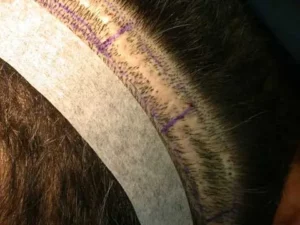
With FUE, donor scars are tiny and spread out like small dots, making them barely visible. However, each follicle removed in FUE leaves a scar, so harvesting many follicles can result in multiple scars [3]. On the other hand, FUT involves removing a strip of skin from the back of the head, which leaves a thin and elongated horizontal scar. The visibility of the scar depends on factors such as hair length and the individual’s healing process.
Can plastic surgery remove hair transplant scars?
Plastic surgery can be considered as an option to decrease or hide scars that may occur due to a hair transplant. However, it may not always be possible to completely eliminate them. The success of scar revision procedures depends on various factors such as the type of scar, its size, and the individual’s skin type. Scar excision involves removing the old scar and closing the wound with meticulous surgical techniques to create a less noticeable scar.
Laser treatments can also be used to make scars less conspicuous by improving their texture and color. Dermabrasion, on the other hand, involves removing the top layer of skin, which helps to smooth out the scarred area.
Does minoxidil work on scars?
Minoxidil is an FDA-approved medication that slows down hair loss efficiently. Since hair transplants into scar tissue have notoriously low survival rates, it’s essential to use a solution to encourage hair growth and stimulate blood flow to the scalp in the days and weeks after your transplant surgery. However, the evidence on how well Minoxidil works for scarring alopecia is unclear, so it may not be a definite solution for treating scar tissue after a hair transplant. [4]
Hair Transplant Scar Revision in Turkey
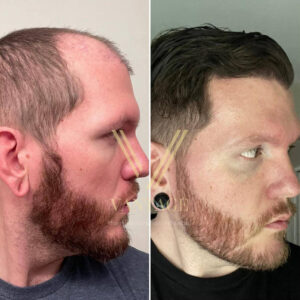
Are you tired of hiding your hair transplant scars? You don’t have to live with them anymore! Our hair transplant scar revision treatment can transform your appearance by providing a thicker and more seamless look. Check out our impressive before-and-after photos of hair transplant scar revision. Say goodbye to the embarrassment and hello to your new confident self!
Are hair transplants in Turkey safe?
Getting a hair transplant in Turkey is a safe option due to its high-level educational system on medicine and the governmental support of the Ministry of Health to the medical tourism industry. This ensures you can receive a high-quality hair transplant in Turkey without any worries. The country attracts patients worldwide due to the high quality of its medical procedures and the low cost compared to other countries. So, if you are considering getting a hair transplant, Turkey is an excellent option to explore.
Before choosing the best place to get a hair transplant for repair, please ensure you communicate with your surgeon. Feel free to check out our patient’s amazing results they’ve achieved with this rejuvenating procedure. So, if you’d like to get amazing results like our patients, take a step further and contact us by clicking the WhatsApp icon. Our team of experts will be more than happy to answer any questions you may have!
References:
- Unger W, Unger R, Wesley C. The surgical treatment of cicatricial alopecia. Dermatol Ther. 2008;21(04):295–311. https://onlinelibrary.wiley.com/doi/full/10.1111/j.1529-8019.2008.00211.x?casa_token=ZGSVvvOxMVQAAAAA%3AvqfgpFy-bNwL-jBesYuUKxv1wloJRNiQV3HL7ufQOHKlORPlFT0n-e11Mbsmp_VjnUIvRbV9W8W12SIx7
- Madura C, Vinay N, Kusuma M R, Harsha S, Chandrashekar B S. The assessment of hair transplantation outcomes in cicatricial alopecia. Int J Trichology. 2020;12(04):164–167. https://pubmed.ncbi.nlm.nih.gov/33376285/
- https://ishrs.org/is-fue-scarless/
- Tyagi V, Singh P K. A new approach to treating scarring alopecia by hair transplantation and topical minoxidil. Indian J Dermatol Venereol Leprol 2010;76:215 https://ijdvl.com/a-new-approach-to-treating-scarring-alopecia-by-hair-transplantation-and-topical-minoxidil/

